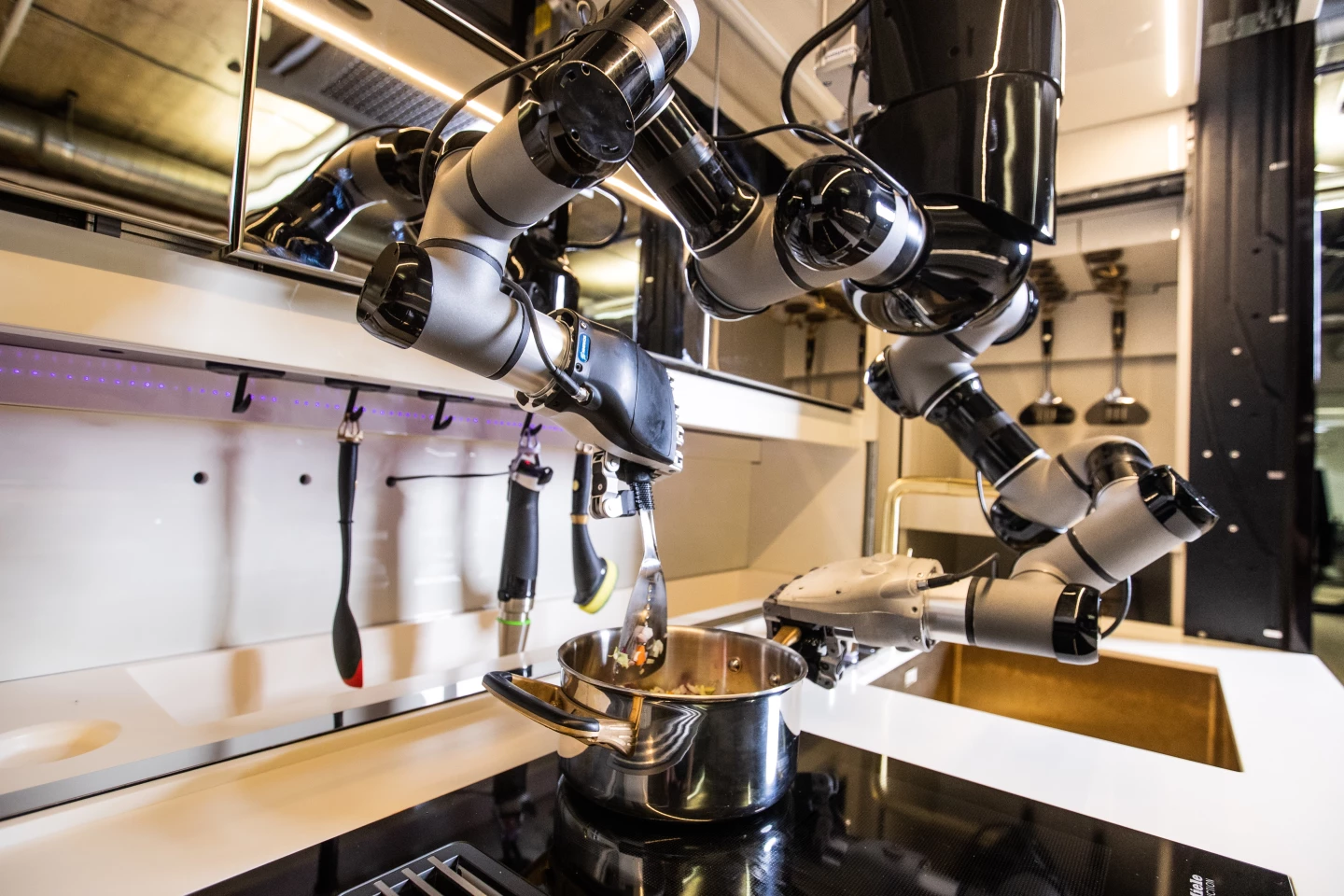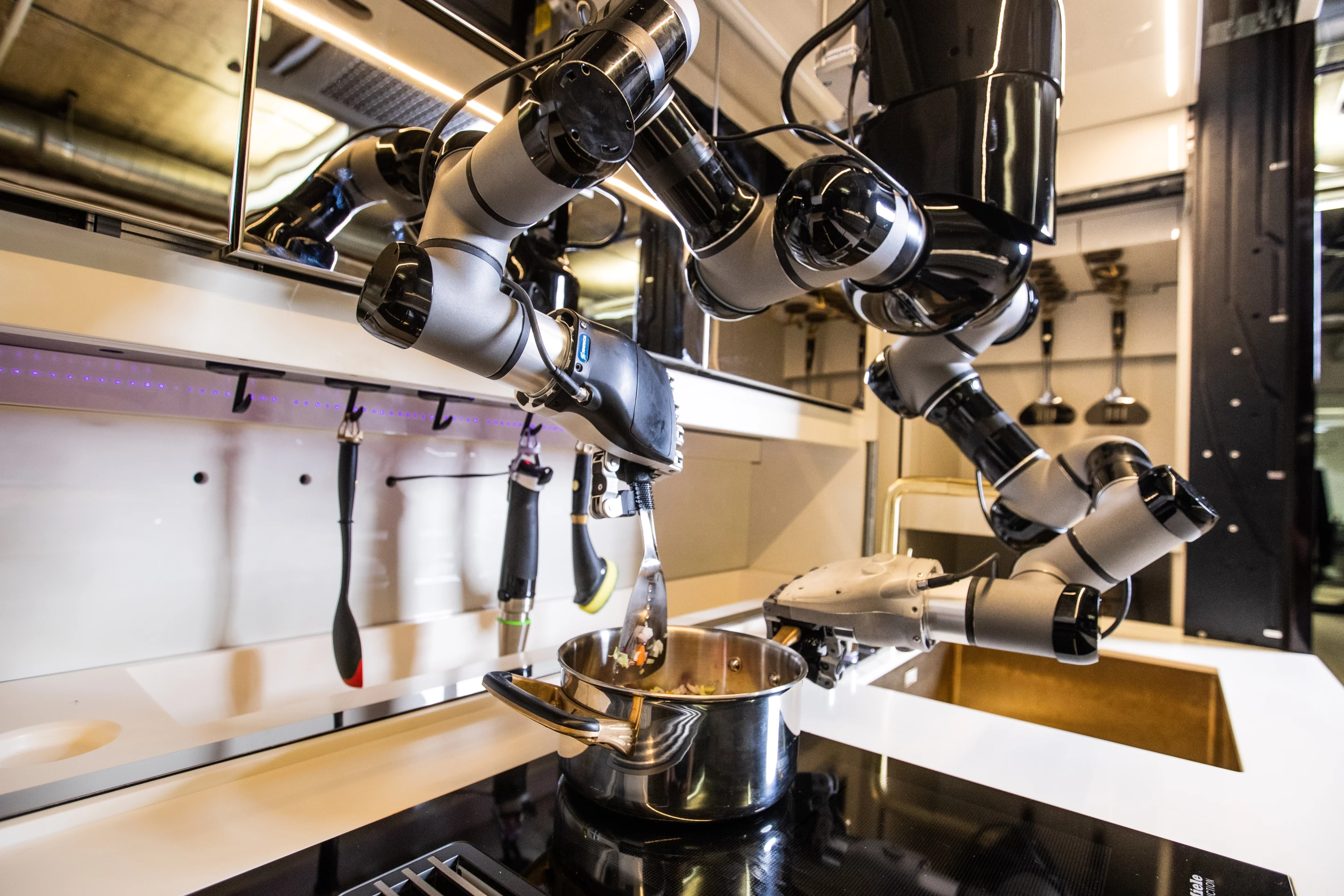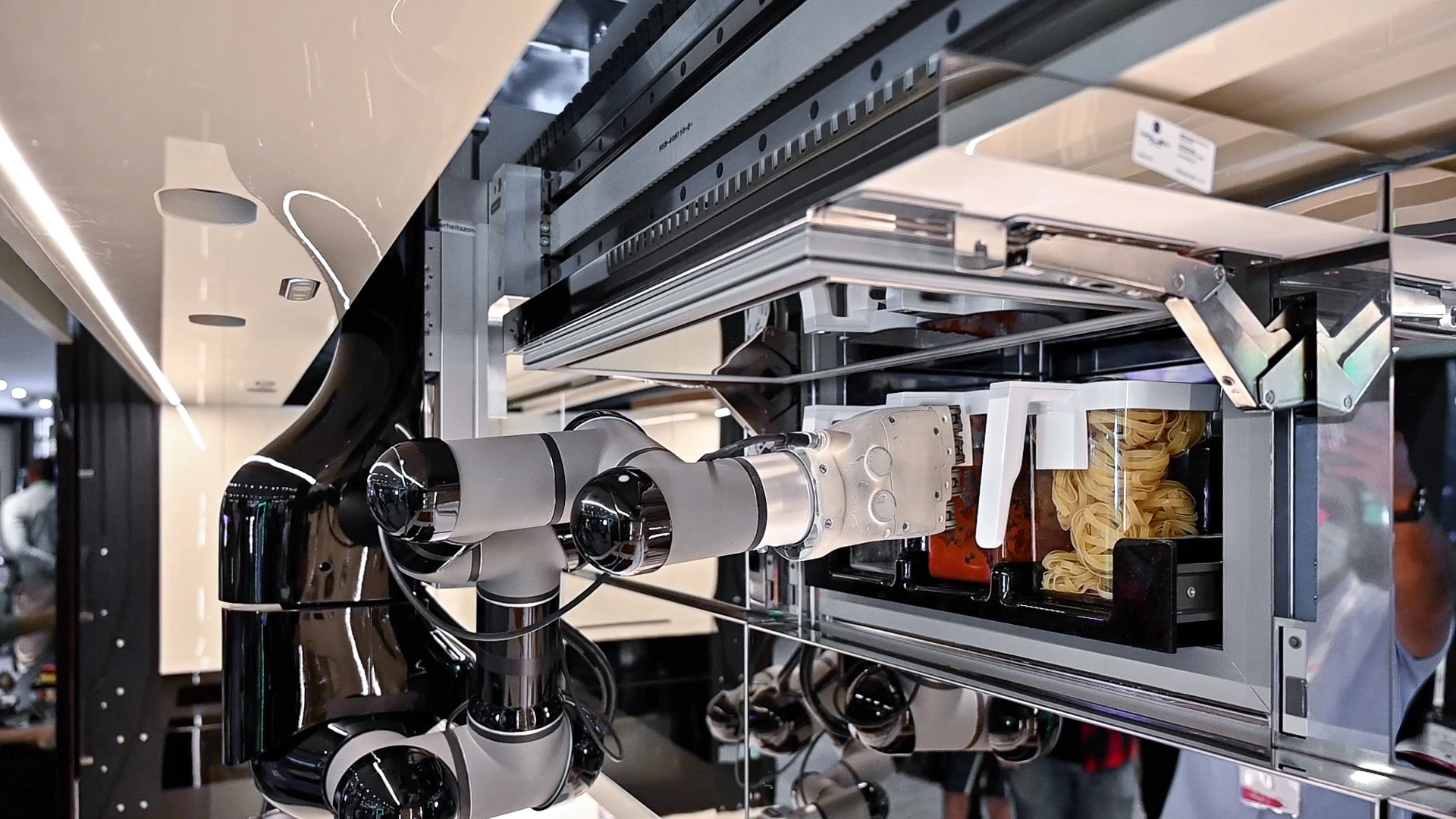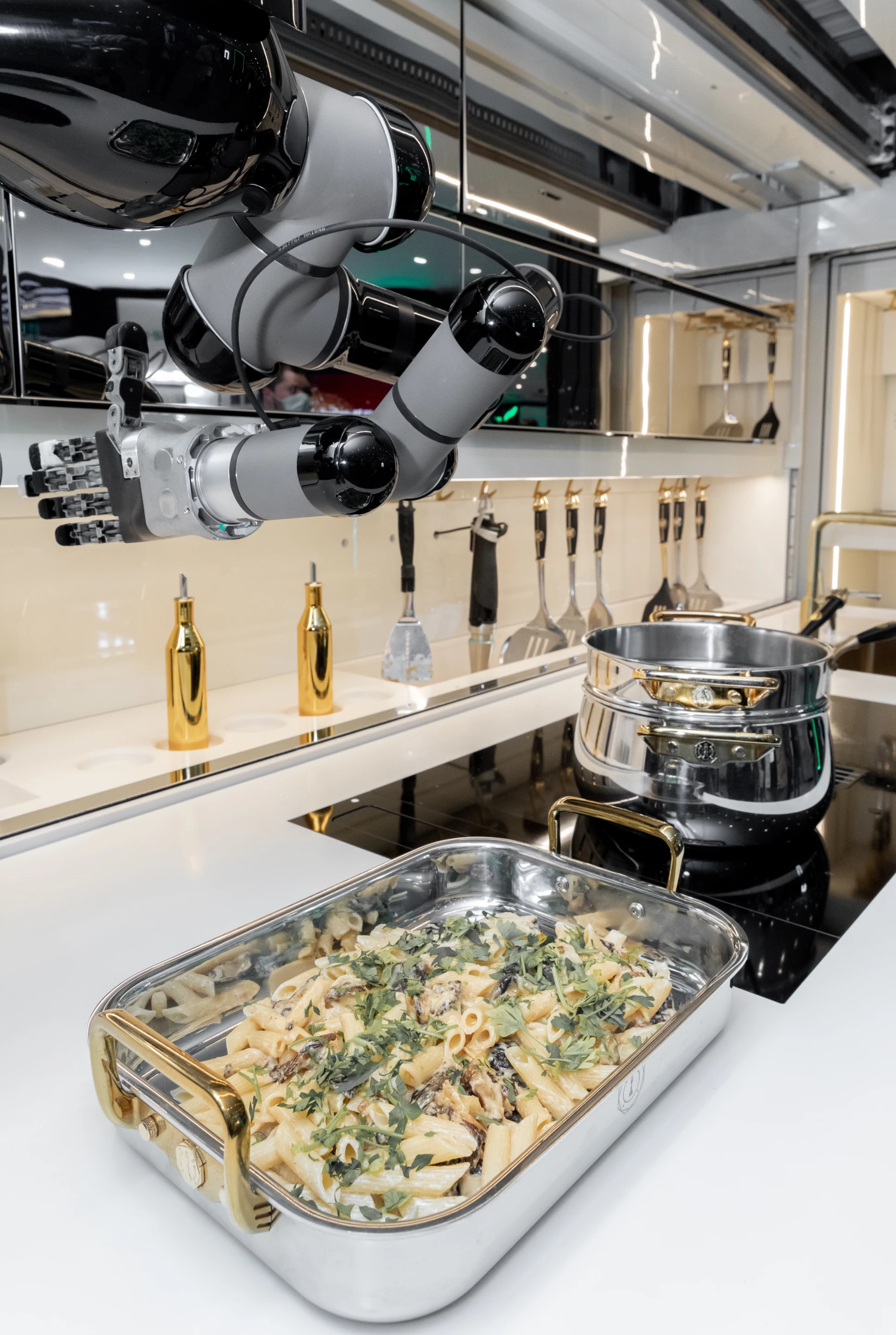Back in 2015, robotic home cooks and kitchen equipment were the talk of the town, and no one was going bigger than Moley Robotics. The British startup stepped beyond robo-mixers and grocery-tracking refrigerators in developing a prototype robo-kitchen built to provide a full cooking takeover, leaving homeowners free to grab a wine and watch it do its thing. Fast-forward through six years of development, and the company is ready to start installing its automated kitchen systems in actual homes.
Since Moley's 2015 prototype showing, we've seen several other robotic kitchen systems sprout up, but ventures like Creator and Picnic have focused on the commercial space. Moley has fine-tuned a system for residential use, looking to streamline the way homeowners prepare and cook daily meals.
The centerpiece of the Moley kitchen remains the pair of robotic arms that stretch down from overhead, providing a tangible set of hands with which the system works. The arms now hang from a single chassis that slides back and forth via a ceiling-integrated rail system. Developed in collaboration with German robotic gripping specialist Schunk, the dexterous hands can handle Moley's bespoke pots, pans and utensils, operate the touch-based induction cooktop and other smart appliances, pour and mix ingredients, plate meals, and clean up messes. Optical cameras and sensors map out ingredients, cookware and other system components so that the hands can locate exactly what they need.

In order to give those robotic hands the culinary experience necessary to masterfully create restaurant-level meals, Moley works directly with chefs to compile recipes. More than merely typing ingredients, measurements and step-by-step instructions into a computer, the chefs actively prepare the recipes for live 3D recording. The system is able to capture the nuances of the chefs' actions, relying on custom algorithms to translate human movement into digital movement. Moley plans to compile more than 5,000 recipes.
The homeowner controls the kitchen through a large touchscreen that includes all the different recipes, and users can pare results down via a variety of parameters, including specific diet restrictions and cuisine type.

The Moley kitchen and its accompanying bespoke cooking tools are designed for seamless human takeover, so homeowners don't have to give away all their cooking autonomy should they be in the mood to whip something up. Home cooks can also record their own recipes using Moley's creator software so that the robotic system can add them to its repertoire.
Beyond the robotic arms, the Moley kitchen brings a comprehensive installation that includes the appliances, cabinets and tools. It's custom designed for each buyer, complete with luxury options like marble or onyx countertops. The cookware and utensils are built from materials like brass, polished aluminum and gold-coated stainless steel, and buyers can match the kitchen to their greater home interior with a wide selection of trims and finishes.

Pricing will, of course, vary according to layout and options selected, but Moley estimates that a premium "Moley R" installation will cost approximately £248,000 (approx. US$338,000). The Moley X package eliminates the robotic arms for a simpler technologically assisted cooking experience that uses the touchscreen interface, recipe database, and smart appliances and equipment to help guide homeowners through the cooking process. A premium X configuration will run buyers roughly £99,000 (US$135,000).
"Our luxury fully automated smart kitchen is now on sale, and like all breakthrough technologies – cars, televisions and computers – it will appeal to enthusiasts, professionals and early adopters, and is priced accordingly," Moley founder and CEO Mark Oleynik said in last week's CES announcement. "We anticipate that our pricing will be reduced significantly over time with production volume, efficiencies and economies of scale, whilst simultaneously enhancing additional functionalities of the product."
Moley plans to add a commercial-grade robotic kitchen in 2021, saying that interest among restaurants, hotels and caterers was particularly strong after its prototype debut in 2015. The commercial model will be optimized for keeping up with the fast pace of restaurant kitchens while reliably churning out multiple portions of precisely prepared meals.
Watch the Moley robo-kitchen do its thing in the video below.
Source: Moley Robotics
















